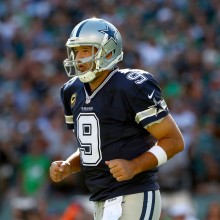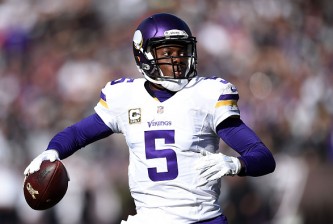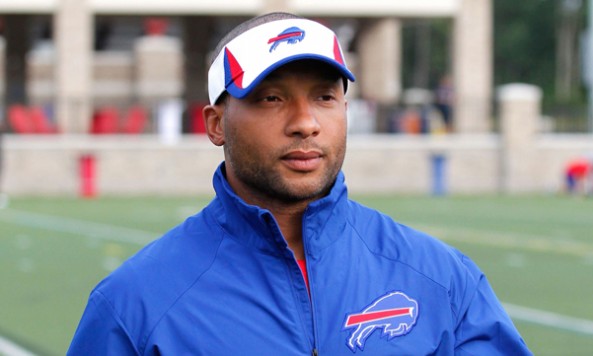The Buffalo Bills are the only NFL team that hasn’t made the playoffs this century. I wrote this back in 2010, and it still stands:
It doesn’t take long for an NFL team to go from good to bad and from bad to good, which is why it’s so unbelievable that the Bills have been so consistently bad.
With all due respect to Ralph Wilson beyond the grave, this franchise has been mismanaged in epic fashion for nearly two decades running. Marv Levy was general manager well beyond his expiration date as an NFL personnel expert. Russ Brandon ran the team like a business, not a sports squad. Wilson meddled. Buddy Nix and Chan Gailey were dinosaurs. None of it was healthy.
When’s the last time this franchise made a great first-round pick? C.J. Spiller, I suppose, but now the hot rumor is that they’re looking to use Spiller as trade ammunition in an attempt to move up to the No. 1 or No. 2 spot in order to land a hotshot like Jadeveon Clowney Greg Robinson.
As dominant as those prospects could one day become, the NFL draft is still a crapshoot, as the Bills know all too well based on their experience with guys like Aaron Maybin, Leodis McKelvin, Donte Whitner and Lee Evans. Why would a team that lacks talent across the board and possesses only six picks mortgage an entire draft in order to upgrade from, say, the draft’s second-best defensive end or offensive tackle, to a guy like Clowney or Robinson?
Putting all of your eggs in one basket in order to land a franchise quarterback is one thing. But for a pass rusher or a left tackle? That’s nonsensical.
Trading up is usually stupid, especially if you aren’t going to land a franchise-caliber signal-caller. Vox.com’s Joseph Stromberg wrote a nice summary Wednesday of a series of papers produced by economists Cade Massey and Richard Thaler, who studied 15 years of draft data in order to draw some conclusions about draft trades.
Key excerpt No. 1:
Draft picks can be traded, and the success of any one player picked is highly uncertain. Because of that, their data says that in the current trade market, teams are always better off trading down — that is, trading one high pick for multiple lower ones — but many teams become overconfident in their evaluation of one particular player and do the exact opposite: package several low picks for the right to take one player very early.
Key excerpt No. 2:
These numbers suggest that moving up eight picks (the average distance between the first and second players at the same position) should cost a small amount, since you’re only increasing the odds of a getting a more productive player by four percent or so. But as the steep curve shows, teams pay a ton to move up, especially at the top of the draft.
“It’s basically a coin flip,” Massey says, “but teams are paying a great deal for the right to call which side of the coin.”
And finally:
If all teams took note of these findings and corrected their behavior, the principles would no longer apply. Teams would be much less interested in trading up, so the lucrative market for trading down would evaporate.
Why hasn’t this happened? One answer is a widely-known psychological bias called the overconfidence effect. As people are given more information, the accuracy of their analysis often hits a ceiling, but their confidence in it continues to increase.
This tendency has been demonstrated in all sorts of areas, from bettors picking horses to psychologists making diagnoses. It’s not hard to imagine that NFL general managers — who are given scouting reports on players that cover everything from their body fat percentage to their home life — fall victim to the same sort of overconfidence and, as Massey said, “fall in love” with certain players.
There’s also the fact that the sports world as a whole tends to glamorize superstars — leading many to disproportionately attribute a 53-player roster’s success to one or two highly drafted players. For a struggling GM, it might seem much easier to trade up and land a guaranteed superstar than patiently fill a roster with competent players.
The Bills are that team!
This is an indication that they’re are desperate. General manager Doug Whaley doesn’t have a boss, and the front office needs to win over fans and support. They’re going nowhere fast on the field, and the future of the franchise is in limbo.
But Clowney and Robinson don’t represent quick fixes. If anything, the Bills are on the verge of digging an even deeper hole.























